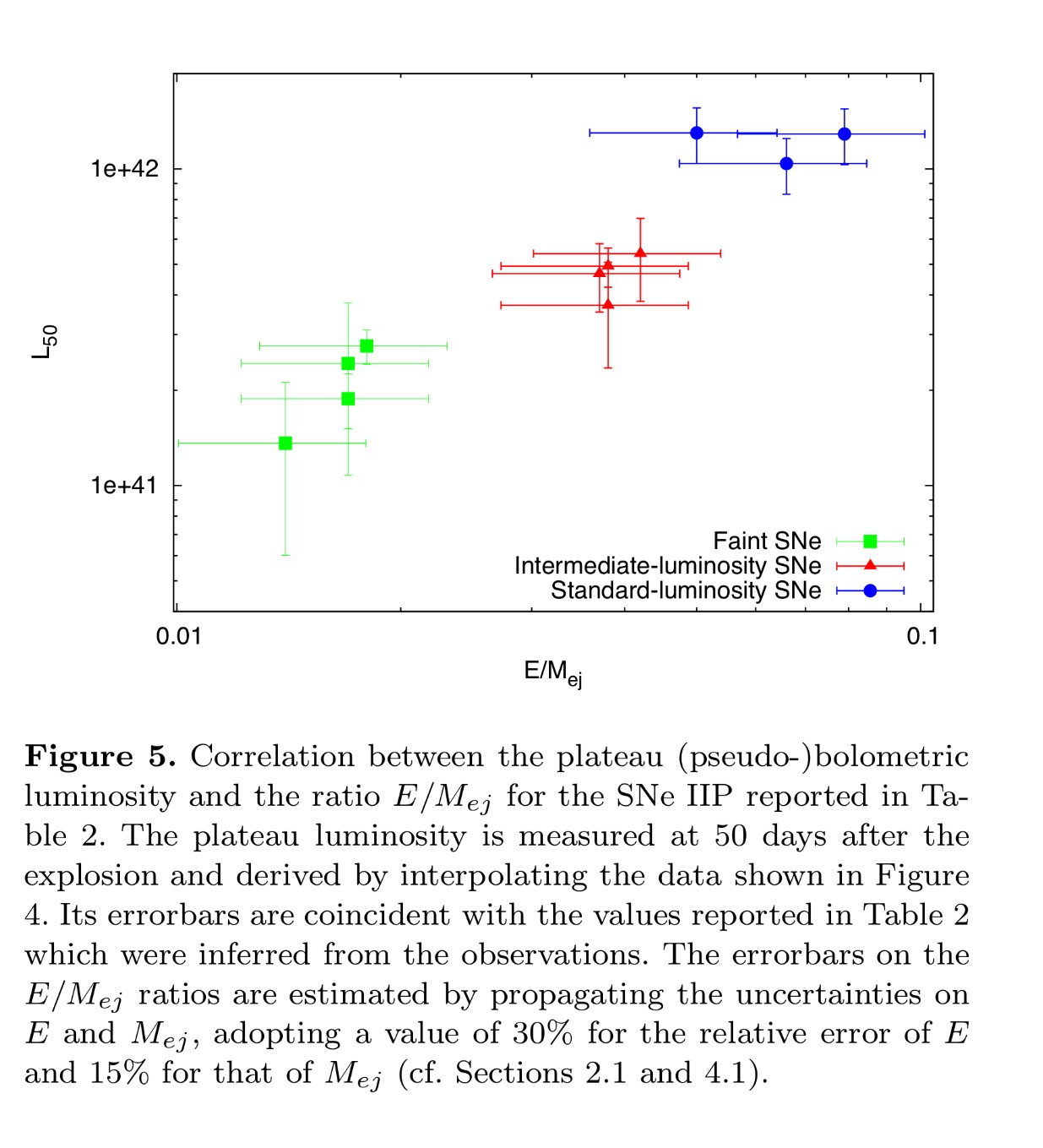Padova-Asiago Supernova Group
Highlights
Radiation-hydrodynamical modelling of underluminous type II plateau Supernovae
Pumo, M.L. et al. 2017, MNRAS 464, 3013 (link to pdf)
With the aim of improving our knowledge about the nature of the progenitors of low-luminosity Type II plateau supernovae (LL SNe IIP), we made radiation- hydrodynamical models of the well-sampled LL SNe IIP 2003Z, 2008bk and 2009md. For these three SNe we infer explosion energies of 0.16-0.18 foe, radii at explosion of 1.8-3.5 1013 cm, and ejected masses of 10-11.3M. The estimated progenitor mass onthemainsequenceisintherange13.2-15.1M forSN2003Zand11.4-12.9M for SNe 2008bk and 2009md, in agreement with estimates from observations of the progenitors. These results together with those for other LL SNe IIP modelled in the same way, enable us also to conduct a comparative study on this SN sub-group. The results suggest that: a) the progenitors of faint SNe IIP are slightly less massive and have less energetic explosions than those of intermediate-luminosity SNe IIP; b) both faint and intermediate-luminosity SNe IIP originate from low-energy explosions of red (or yellow) supergiant stars of low-to-intermediate mass; c) some faint objects may also be explained as electron-capture SNe from massive super-asymptotic giant branch stars; and d) LL SNe IIP form the underluminous tail of the SNe IIP family, where the main parameter guiding the distribution seems to be the ratio of the total explosion energy to the ejected mass. Further hydrodynamical studies should be performed and compared to a more extended sample of LL SNe IIP before drawing any conclusion on the relevance of fall-back to this class of events. 81
Pumo, M.L. et al. 2017, MNRAS 464, 3013 (link to pdf)
With the aim of improving our knowledge about the nature of the progenitors of low-luminosity Type II plateau supernovae (LL SNe IIP), we made radiation- hydrodynamical models of the well-sampled LL SNe IIP 2003Z, 2008bk and 2009md. For these three SNe we infer explosion energies of 0.16-0.18 foe, radii at explosion of 1.8-3.5 1013 cm, and ejected masses of 10-11.3M. The estimated progenitor mass onthemainsequenceisintherange13.2-15.1M forSN2003Zand11.4-12.9M for SNe 2008bk and 2009md, in agreement with estimates from observations of the progenitors. These results together with those for other LL SNe IIP modelled in the same way, enable us also to conduct a comparative study on this SN sub-group. The results suggest that: a) the progenitors of faint SNe IIP are slightly less massive and have less energetic explosions than those of intermediate-luminosity SNe IIP; b) both faint and intermediate-luminosity SNe IIP originate from low-energy explosions of red (or yellow) supergiant stars of low-to-intermediate mass; c) some faint objects may also be explained as electron-capture SNe from massive super-asymptotic giant branch stars; and d) LL SNe IIP form the underluminous tail of the SNe IIP family, where the main parameter guiding the distribution seems to be the ratio of the total explosion energy to the ejected mass. Further hydrodynamical studies should be performed and compared to a more extended sample of LL SNe IIP before drawing any conclusion on the relevance of fall-back to this class of events. 81
